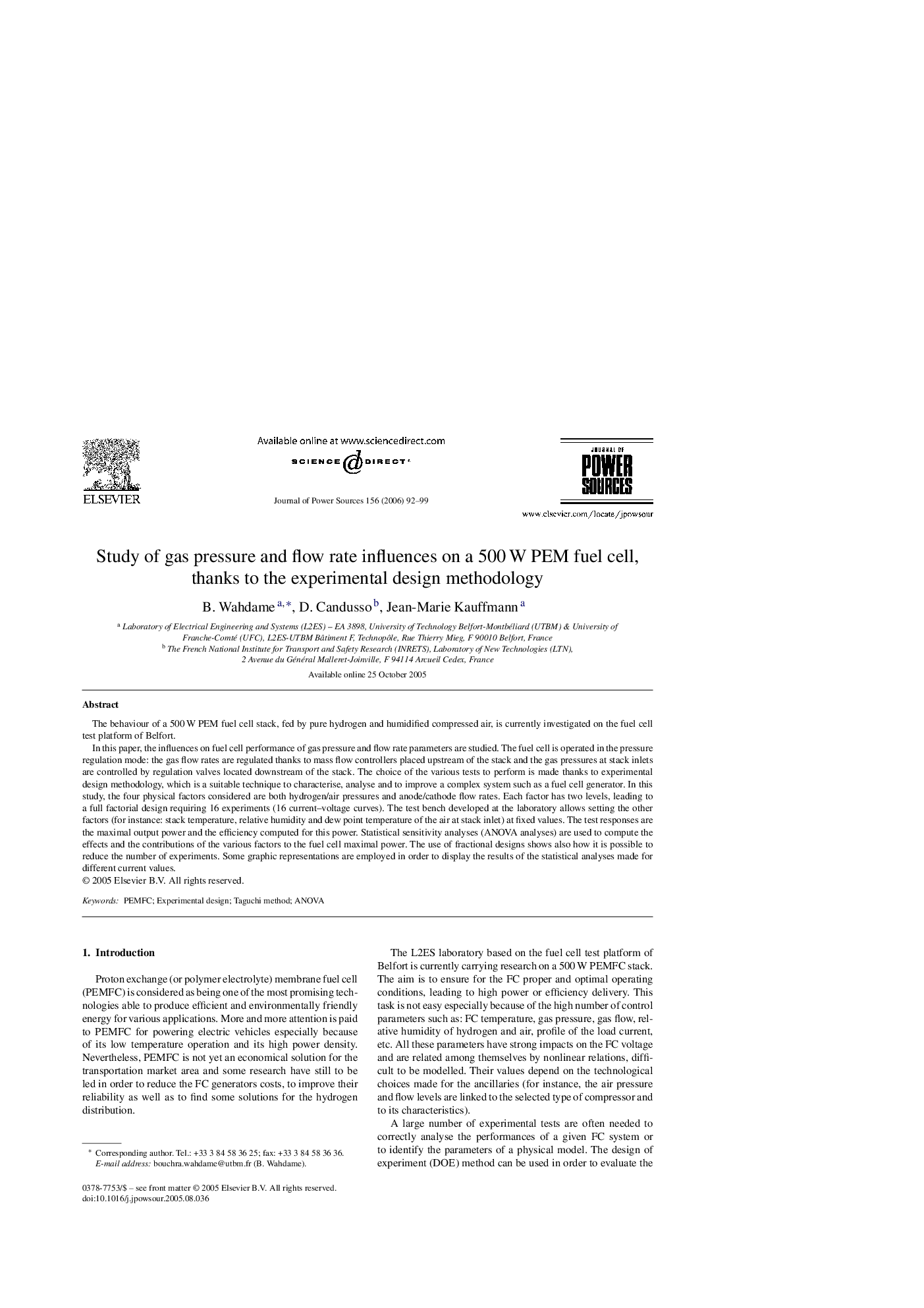| Article ID | Journal | Published Year | Pages | File Type |
|---|---|---|---|---|
| 1291297 | Journal of Power Sources | 2006 | 8 Pages |
The behaviour of a 500 W PEM fuel cell stack, fed by pure hydrogen and humidified compressed air, is currently investigated on the fuel cell test platform of Belfort.In this paper, the influences on fuel cell performance of gas pressure and flow rate parameters are studied. The fuel cell is operated in the pressure regulation mode: the gas flow rates are regulated thanks to mass flow controllers placed upstream of the stack and the gas pressures at stack inlets are controlled by regulation valves located downstream of the stack. The choice of the various tests to perform is made thanks to experimental design methodology, which is a suitable technique to characterise, analyse and to improve a complex system such as a fuel cell generator. In this study, the four physical factors considered are both hydrogen/air pressures and anode/cathode flow rates. Each factor has two levels, leading to a full factorial design requiring 16 experiments (16 current–voltage curves). The test bench developed at the laboratory allows setting the other factors (for instance: stack temperature, relative humidity and dew point temperature of the air at stack inlet) at fixed values. The test responses are the maximal output power and the efficiency computed for this power. Statistical sensitivity analyses (ANOVA analyses) are used to compute the effects and the contributions of the various factors to the fuel cell maximal power. The use of fractional designs shows also how it is possible to reduce the number of experiments. Some graphic representations are employed in order to display the results of the statistical analyses made for different current values.
